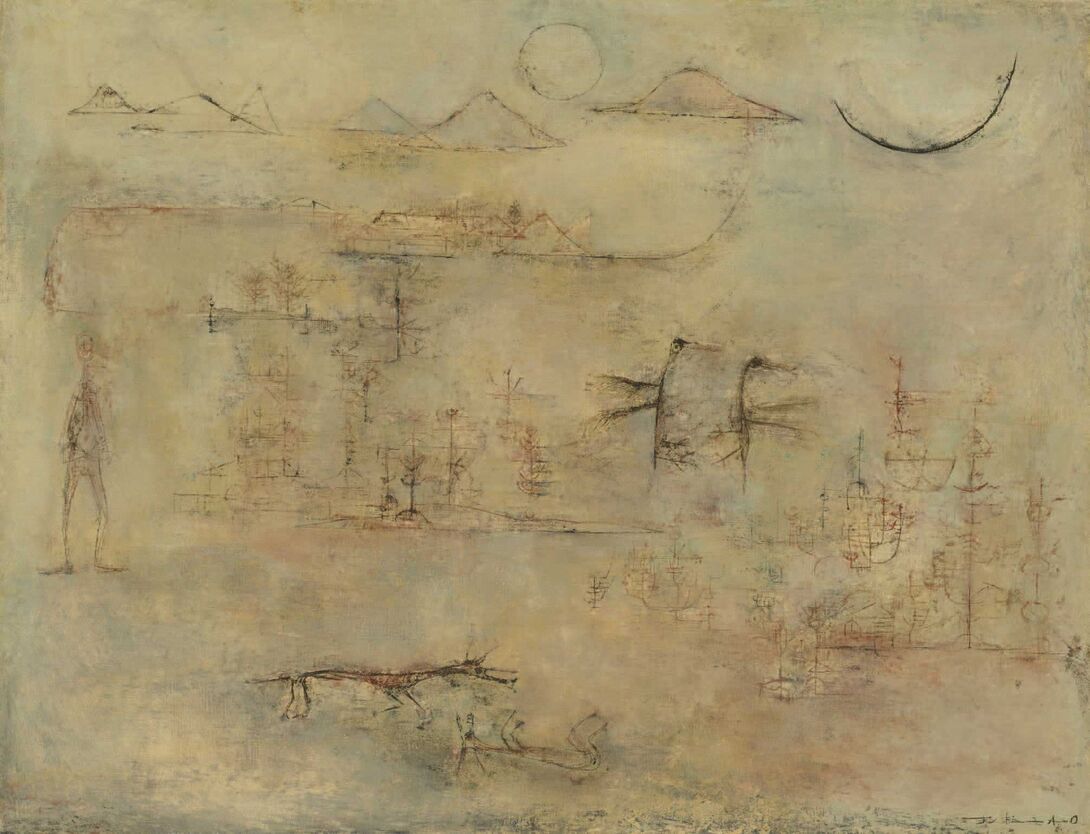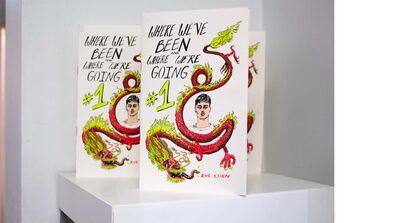
About a Work
In the museum with Jennifer Lee
Zao Wou-Ki, Pink Composition
by Zoya Brumberg (MA 2015)

Chinese calligraphic strokes and modernist abstractions coalesce into Zao Wou-Ki’s landscape Pink Composition (Composition en rose) in the Art Institute of Chicago museum’s modern and contemporary art collection. Figures etched into paint reveal “the rough line of a moon, of a sun, of mountains in the distance, thatched cottages, the birds themselves, some trees, maybe some boats, then what looks like a human figure to the left, and a couple of animals—dogs or wolves—that are either playing or preying,” says Assistant Professor of Art History, Theory, and Criticism Jennifer Dorothy Lee.
Zao painted Pink Composition shortly after he left Shanghai to work as an artist in Paris. His works from this era fall into the category of modernist abstraction, yet his training in traditional Chinese painting is apparent through the figurative elements. The tension between Zao’s inclusion in the Western modernist canon as a French painter and his Chinese identity make his work difficult to characterize. This is exactly why Lee chooses to teach this era of Zao’s work to her undergraduate students. “For some people, he’s a Chinese diaspora painter. For other people, he’ll always be a Chinese painter that nonetheless really does a kind of Western modernism. For other people, I think he is more or less a French painter,” she explains.
Lee says that some students have difficulty engaging with midcentury modernist painting because it feels extremely distant from them. But the complexity of Zao’s identities and the placement of his works in art history resonate with many of the international—and especially Chinese—students in Lee’s courses. The ways that Zao is characterized and the way that he presented himself inspire students to question their own relationships to their national identities and what it means to study art in an American school. Students might ask themselves: “Am I a transnational citizen of the world? How do I position myself? How does that impact the kind of style I adopt?”
